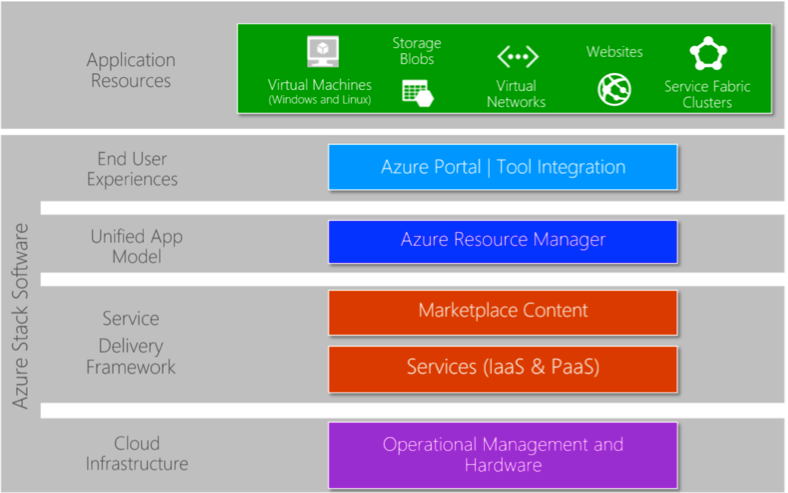Azure Stack
There is a universal need for a cloud native development environment that can be deployed in a local data center to allow developers to build applications that can be tested and deployed to the cloud. Azure provides just such an environment and a rich platform for developers to build modern applications. Most applications are moving to public cloud quickly, however some applications face certain obstacles; latency and intermittent connectivity being primary examples. Azure Stack provides a way to run the same applications in on-premises environments. With a consistent cloud platform, on-prem and in the cloud, organizations can be consistent and make technology decisions that are based on business requirements, rather than business decisions based on technology availability.
A common misconception is that Azure is a “Microsoft only” solution, far from it Azure supports a whole set of opensource applications and development environments like Docker, Hadoop, Java, Linux etc.
The Azure Stack Architecture is designed to ensure that most applications and services that are certified for the Azure cloud will work on Azure Stack e.g Docker, Pivotal Cloud Foundry, Red Hat Enterprise Linux, and SUSE Linux.
The Unified Applications Model is a key to the Azure cloud model built around the Azure Resource Manager. In both Azure and Azure Stack, Azure Resource Manager plays two important roles. The first is by providing a single-entry point for users and tools to define their resources running in the cloud. The second is focused on enabling teams to create, organize and control their cloud application lifecycle.
A key principle of operating a cloud is constant innovation – new capabilities, new insights and new customer needs are the norm. Microsoft Azure provides a Service Delivery Framework that is composed of over fifty services today and has an enormous amount of content in the Azure Marketplace. As the Azure cloud continues to innovate and new Azure content and services are made available, users now have a way to deploy and manage new functionality throughout Azure datacenters through the effective use of a properly deployed and implemented Azure stack. Azure is fundamentally designed to enable the release of innovation on a regular and on-going cadence. With Azure Stack, the framework we the user uses to install and publish new content and services is the same as they would experience in the Azure cloud.
Like Azure, the Cloud infrastructure with Azure Stack is a purpose built, preconfigured solution that incorporates capacity and lifecycle management.
Azure stack infrastructure capabilities
- Scale: 4-12 nodes (physical servers) per Scale Unit; Single Region, Single Scale Unit
- Certified and validated hardware environment
- Monitoring through REST APIs, System Center Operations Manager and Nagios
- Security and privacy: –
- Best practices from Microsoft, takes a hardened-by-default approach
- Encryption for data at rest, network ACL’s and controlled access (using JEA).
- Meets multiple compliance standards (PCI-DSS, the CSA CCM matrix)
- Patch and updates: Can be automated to deliver pre-validated updates for Azure Stack software, including automated application that’s designed to minimize disruption of customer workloads.


